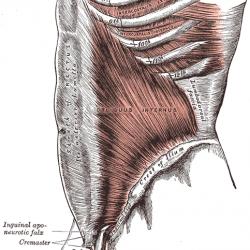Recognizing Mental Health Struggles in Adolescents

Mental health is increasingly recognized as an important aspect of overall well-being. Yet, the adolescent years—often full of transition—can bring unique challenges. Recognizing that a teenager might be struggling with mental health issues should seem simple, but rarely is. With growing pressure from academic demands and the struggles of identity formation, many youths face mental health issues that remain unchecked.
The Unseen Struggles
During adolescence, young people undergo a plethora of physical, emotional, and psychological changes. Parents, educators, and caregivers might dismiss a teenager's odd mood or behavior as typical adolescent angst, but these could serve as early warning signals of mental health issues. The numbers are stark: depression, anxiety, and other mental disorders plague a notable portion of our youth, often derailing their potential. The reluctance or inability of adults to identify these issues can compound this problem.
Adolescence is often synonymous with self-discovery and the search for identity. However, amidst this unfolding journey, many teens find themselves ensnared in the grips of negative self-perception which, if unchecked, can spiral into more significant concerns. Parents and guardians might misinterpret this as simple teenage angst when, in truth, it could be an insidious manifestation of deeper emotional distress. Understanding that these are not merely passing phases allows for a more supportive environment, vital for the well-being of the young individual.
While some teenagers may exhibit noticeable symptoms, others might hide their struggles behind seemingly normal behaviors. A key area of concern arises with potential substance use, which can sometimes be mistaken for typical adolescent behavior. For parents questioning whether their child may need teenage drug rehabilitation, understanding the holistic signs of mental health challenges can support timely interventions.
Recognizing the Signs
While troubled teens might not wear signs around their necks proclaiming, "I need help," they exhibit more subtle signs that can indicate a mental struggle. Watch for noticeable shifts in sleeping or eating patterns, changes in academic performance, withdrawal from usual activities, and increased irritability or aggression. These are not just adolescent quirks but could serve as signal flares, indicative of deeper turmoil.
The spectrum of signs is broad, yet vigilance and empathy can be powerful tools in recognizing when something is amiss. Instances of self-harm or substance misuse can be immediate red flags, yet even subtle behavioral changes such as a passion diminishing or social withdrawal can indicate a teen's silent plea for support. Opening lines of communication, rather than jumping to conclusions, can significantly ease the weight that burdened adolescents may feel.
Cultural and Societal Impediments
Depending on one's cultural background, discussions around mental health may vary from dismissal to outright denial. In some cultures, seeking help is stigmatized, which can keep struggling teenagers in a detrimental loop of silence. Society is making strides to demystify mental health, but progress is uneven, leading to gaps where children fall through unnoticed or unhelped.
Peer influence is yet another element that complicates adolescent mental health. The desire to "fit in" can lead teenagers to disguise their struggles, out of fear of ostracization or judgment from their peers. Despite this, promoting a culture of empathy among peer groups can help dismantle barriers, encouraging open dialogues and fostering supportive relationships where vulnerability isn't perceived as weakness but as courage.
Australia's Mental Health Movement
Consider the example of Australia's targeted approach to mental health in schools, emphasizing early intervention and destigmatizing the conversation around mental health. As it stands, society has a duty to move beyond just individual responsibility towards greater systemic changes.
The Role of Parents and Educators
Parental vigilance is important. Engaging in open conversations with adolescents about their feelings, perceptions, and concerns can work wonders. Additionally, schools should be more than just places of learning; they should serve as a support nexus for students experiencing mental health issues. Teachers and school counselors are often well-placed to catch early signs and should be trained to act effectively when these appear.
Within the educational sphere, the integration of social-emotional learning (SEL) programs can empower students with the skills necessary to manage their emotions, set meaningful goals, and cultivate healthy relationships. Educators can partner with mental health professionals to ensure support systems are holistic, persistent, and responsive to the evolving needs of students, allowing every child the opportunity to thrive not just academically but emotionally.
Calling for Legislative and Systemic Action
Providing resources for mental health services is imperative. Legislative action to improve access to psychologists and mental health professionals for adolescents could prove transformative. Partnering with schools and community organizations to implement these services could fill a massive gap. Parents, educators, and policymakers must come together to prioritize adolescent mental health.
An all-encompassing strategy requires a dedication to creating safe spaces within communities, where mental health can be discussed freely and without judgment. Initiatives tailored towards reducing the stigma associated with mental health issues are paramount, encouraging adolescents to seek the help they need without fear or shame. This initiative, combined with legislative backing, lays a robust foundation for a brighter, more caring future for our youth.
Conclusion
The adolescent period is complicated enough without the added burden of untreated mental health issues. Recognizing the signs and ensuring access to adequate care can be lifesaving. Serious conversation is about having more empathy, better systems, and clearer signals—the question is not whether we can afford action but whether we can afford inaction.
More to Read:
Previous Posts:







